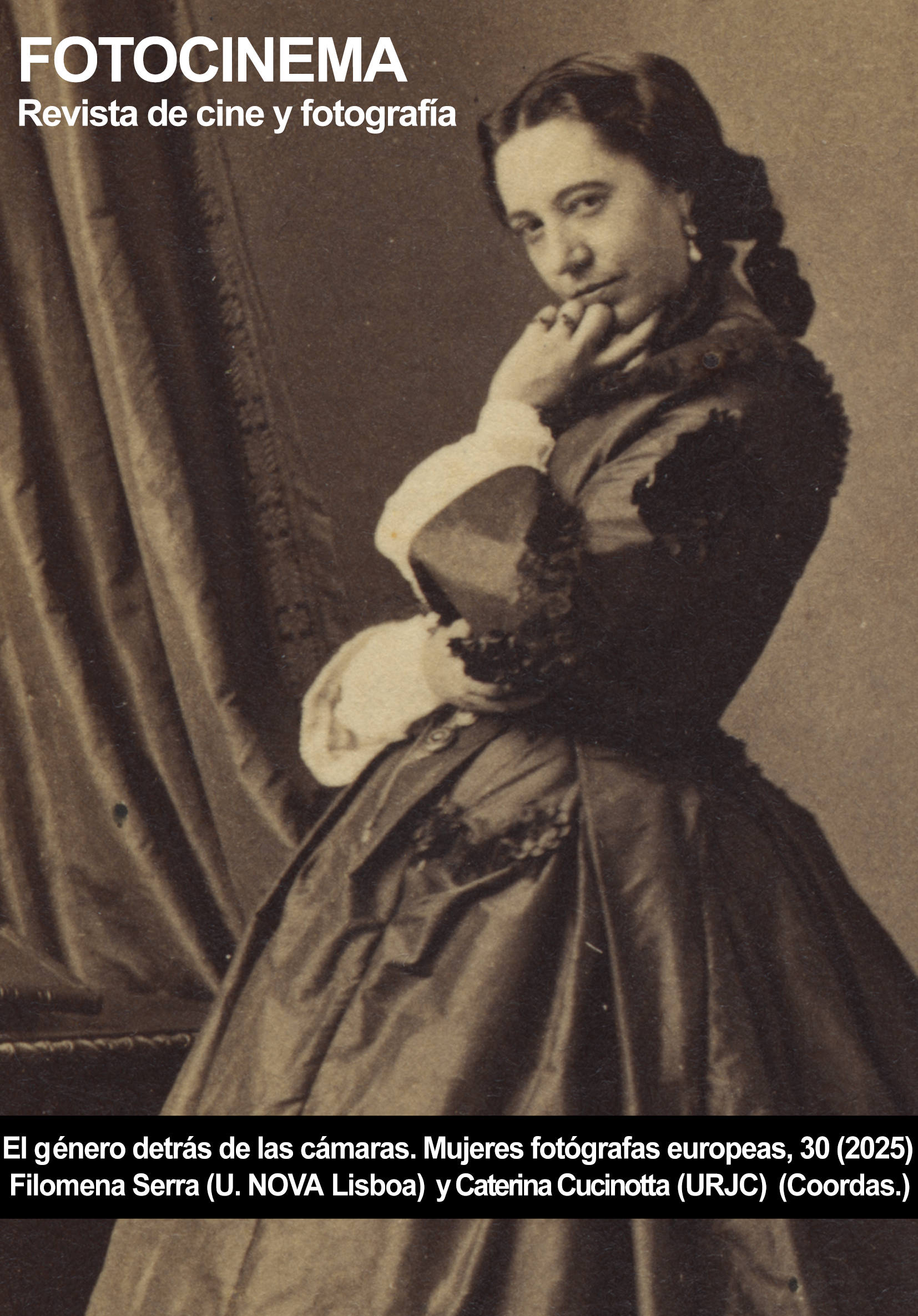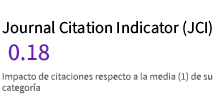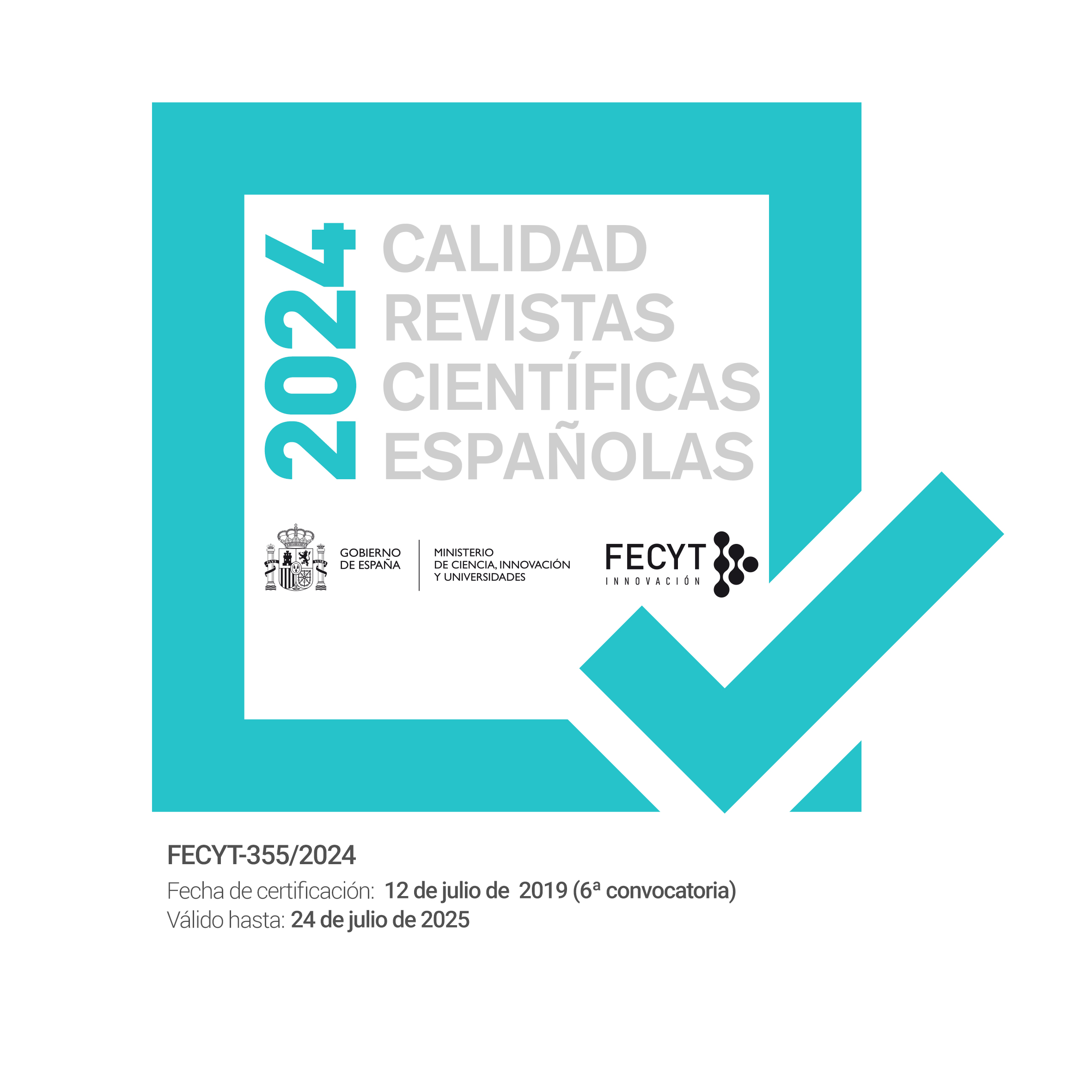Annemarie Heinrich: photographer of classic Argentine cinema and agent of cultural modernization
DOI:
https://doi.org/10.24310/fotocinema.30.2025.20590Keywords:
Photography, Women, Argentine cinema, History of cinema, HistoriographyAbstract
This article presents the progress of an ongoing investigation into the artistic and commercial contribution of the German nationalized Argentinian photographer Annemarie Heinrich to local cinema during the classic period (1933-1959). Our general objective is to reconnect her professional career with the artistic, social and commercial context of an industry in full modernization, restoring the complex and varied evolution of the practices, collaborations, relationships, interests, concerns and commitments that she maintained throughout for many years.
In this text we present the contextual keys that led to the emergence of the photographer's profile and analyzed a series of counterpoints that constitute the facets of that profile. We seek to understand the way in which this multifaceted mix was the creator of a visual regime transversal to the entertainment industries that functioned as social mediation and favored dynamic feedback between different series of cultural production. Our hypothesis is that Annemarie Heinrich was a true agent of cultural modernization and a synergistic protagonist of the cultural industry, both in iconographic, commercial, and human matters: two characterizations that give her back the agency that corresponds to her and that were not considered until now in the argentine cinema historys
Downloads
Metrics
Publication Facts
Reviewer profiles N/A
Author statements
Indexed in
-
—
- Academic society
- N/A
- Publisher
- Universidad de Málaga
References
Aimaretti, M. (12 y el 15 de marzo de 2024). Los papeles de Anne: repensando modos de hacer historias del cine [ponencia inédita]. IX Congreso Internacional AsAECA, Buenos Aires, Argentina.
Afonso Esteves, M. I. y Devés, M. A. (2018). Descripción normalizada e investigación histórica. Reflexiones y potencialidades a través del Fondo Heinrich-Sanguinetti, en M. V. Castro y M. E. Sik (comp.) Actas de las II Jornadas de discusión / I Congreso Internacional. Los archivos personales: prácticas archivísticas, problemas metodológicos y usos historiográficos (pp. 213-230). Centro de Documentación e Investigación de la Cultura de Izquierdas (CeDInCI/ UNSAM).
Baldasarre, M. I. (2011). Mujer/artista: trayectorias y representaciones en la Argentina de comienzos del siglo XX. Separata, (16), 21-32.
Cecilia Belej, C. y Hrycyk, P. (2017). El archivo annemarie heinrich: El patrimonio de una mirada. En P. Caldo, J. Vassallo, Y. de Paz Trueba (coordinación general) Actas de las III Jornadas de Investigación y Reflexión sobre Historia, Mujeres y Archivos (133-141). UNICEN.
Binaghi, P. y Lombardi, P. (eds.) (2024). Annemarie Heinrich. InKomplett. Peripébooks.
Burke, P. (1996). Obertura: la nueva historia, su pasado y su futuro. En P. Burke (ed.), Formas de hacer historia (pp. 11-37). Alianza.
Burke, P. (2006). ¿Qué es la historia cultural? Paidós.
Calistro, M., Cetrángolo, O., España, C., Insaurralde, A. y Landini, C. (1978). Reportaje al cine argentino. Los pioneros del sonoro. Abril.
Cordero Reiman, K. y Sáenz, I. (comp.) (2001). Crítica feminista en la teoría e historia del arte. Conaculta.
Cortés-Rocca, P. (2015). Mirada de mujer. Annemarie Heinrich y el oficio del siglo XX. En P. Cortés Roca, A. Pérez Rubio y V. Giraudo Annemarie Heinrich, intenciones secretas (pp. 31-45). Fundación Constantini-MALBA.
Cuarterolo, A. (2014). De la foto al fotograma. Relaciones entre cine y fotografía en la Argentina (1840-1933). CDF.
Despret, V. (2022). Habitar como un pájaro: modos de hacer y de pensar los territorios. Cactus.
Devés, M. A. (2017). El fondo Annemarie Heinrich y sus potencialidades historiográficas. Revista Electrónica de Fuentes y Archivos (REFA). Centro de Estudios Históricos “Prof. Carlos S. A. Segreti” Córdoba, (8), 238-243.
Di Núbila, D. (1959). Historia del cine argentino. Vols. I y II. Cruz de Malta.
D’Lugo, M. (2007). “Gardel, el film hispano y la construcción de la identidad auditiva”. En N. Berthier y J.-C. Seguin (eds.) Cine, nación y nacionalidades en España (pp. 147-163). Casa de Velázquez.
España, C. (dir.) (2000). Cine argentino. Industria y clasicismo. Vol I. Fondo Nacional de las Artes.
España, C. (2000b). Cine argentino. Industria y clasicismo. Vol II. Fondo Nacional de las Artes.
Facio, S. (selección y textos) (1987). Annemarie Heinrich. El espectáculo en Argentina 1930-1970. La Azotea.
Gil Mariño, C. (2015). El mercado del deseo. Tango, cine y cultura de masas en la Argentina de los años ’30. Teseo.
Gluzman, G. (2016). Trazos invisibles. Mujeres artistas en Buenos Aires (1890-1923). Biblos.
Gluzman, G. (2021). Mujeres modernas en la obra de Annemarie Heinrich: fotografía, glamour y visibilidad femenina. En E. Zerwes y H. Costa Mulheres fotógrafas/Mulheres Fotografadas. Fotografía e género na América Latina (pp. 221-230). Intermedio.
Hansen, M. (2023). La producción masiva de los sentidos. laFuga, (27). http://2016.lafuga.cl/la-produccion-masiva-de-los-sentidos/1152 Traducción Agustín Jaluf y Pablo Lanza.
Haraway, D. (1995). Conocimientos situados: la cuestión científica en el feminismo y el privilegio de la perspectiva parcial. En Ciencia, cyborgs y mujeres. La invención de la naturaleza (pp. 313-346). Cátedra.
Harding, S. (2012). ¿Una filosofía de la ciencia socialmente relevante? Argumentos en torno a la controversia Sobre el punto de vista feminista. En N. Blazquez Graf, F. Flores Palacios, M. Ríos Everardo (coords.) Investigación feminista: epistemología, metodología y representaciones sociales (pp. 39-65). UNAM.
Heinrich, A. y Sol, A. (1962). Ballet en la Argentina. Editorial AS.
Karush, M. (2013). Cultura de clase. Radio y cine en la creación de una Argentina dividida (1920-1946). Ariel.
Kriger, C. (2014). Estudios sobre cine clásico en Argentina: de la perspectiva nacional a la comparada. Revista AdVersus, XI, (26), 133-150.
Loveday, K. (2022). The Pioneer Paradigm. Feminist Media Histories, 8, (1), 165–180.
Martín-Barbero, J. (1987). De los medios a las mediaciones. Comunicación, cultura y hegemonía. Gustavo Gilli.
Mayayo, P. (2003). Historias de mujeres, historias del arte. Cátedra.
Montaldo, G. (2016). Museo del consumo: archivos de la cultura de masas en Argentina. Fondo de Cultura Económica.
Nelson, A. (2020). Introduction. En A. Nelson, M. Fineman et al The new woman behind the cámara (pp. 21-95). National Galery of Art Washington.
Niedermaier, Alejandra (2008). La mujer y la fotografía. Una imagen espejada de autoconstrucción y construcción de la historia. Leviatán.
Nochlin, L. (2020). ¿Por qué no ha habido grandes mujeres artistas? En Situar en la historia. Mujeres, arte y sociedad (pp. 25-49). Akal.
Peirano, M. P. (2023). Vicente J. Benet. «Me interesa pensar las consecuencias de la experiencia cinematográfica en elementos que trascienden el propio marco de los estudios fílmicos». laFuga, (27). Disponible en: http://2016.lafuga.cl/vicente-j-benet/1172
Pérez Rubio, A. (2015). Annemarie Heinrich. Liberación visionaria de los cuerpos. En P. Cortés Rocca, A. Pérez Rubio y V. Giraudo Annemarie Heinrich, intenciones secretas (pp. 9-18). Fundación Constantini-MALBA.
Pollock, G. (2001). Diferenciando: el encuentro del feminismo con el canon. En K. Cordero Reiman e I. Sáenz (comp.) Crítica feminista en la teoría e historia del arte (141-158). Conaculta.
Pollock, G. (2002). Disparar sobre el canon. Revista Mora (8), 29-46.
Pollock, G. (2013). Visión y diferencia: feminismo, feminidad e historias del arte. Fiordo.
Pujol, S. (2016). Valentino en Buenos Aires. Los años veinte y el espectáculo. Gourmet Musical.
Romero, L. A. (2001). Breve historia contemporánea de la Argentina 1916-1999. Fondo de Cultura Económica.
Sarlo, B. (2020). Una modernidad periférica. Buenos Aires 1920-1930. Siglo XXI.
Travnik, J. (2004). Un cuerpo, una luz, un reflejo en A. Heinrich y J. Travnik Annemarie Heinrich. Un cuerpo, una luz, un reflejo (pp. 11-27). Lariviere.
Travnik, J., Sanguinetti, A. y Sanguinetti, R. (2004). Una conversación con Alicia y Ricardo Sanguinetti en A. Heinrich y J. Travnik Annemarie Heinrich. Un cuerpo, una luz, un reflejo (pp. 28-31). Lariviere.
Wechsler, D. (2015). Estrategias de la mirada: Annemarie Heinrich, inédita. Universidad Nacional de Tres de Febrero.
Zuviría, F. de (2019). Mundo propio. Fotografía moderna argentina 1927-1962. MALBA.
Downloads
Published
How to Cite
Issue
Section
License
Copyright (c) 2025 María Aimaretti

This work is licensed under a Creative Commons Attribution-NonCommercial-NoDerivatives 4.0 International License.
All contents published in Fotocinema Revista científica de cine y fotografía are protected under the Creative Commons Attribution-NonCommercial-ShareAlike 4.0 International (CC BY-NC-SA 4.0) license. All about this license is available in the following link: <http://creativecommons.org/licenses/by-nc-sa/4.0>
Users can copy, use, redistribute, share and exhibit publicly as long as:
- The original source and authorship of the material are cited (Journal, Publisher and URL of the work).
- It is not used for comercial purposes.
- The existence of the license and its especifications are mentioned.
There are two sets of authors’ rights: moral and property rights. Moral rights are perpetual prerogatives, unrenounceable, not-transferable, unalienable, imprescriptible and inembargable. According to authors’ rights legislation, Fotocinema. Revista científica de cine y fotografía recognizes and respects authors moral rights, as well as the ownership of property rights, which will be transferred to University of Malaga in open access. The property rights are referred to the benefits that are gained by the use or the dissemination of works. Fotocinema. Revista científica de cine y fotografía is published in an open access form and it is exclusively licenced by any means for doing or authorising distribution, dissemination, reproduction, , adaptation, translation or arrangement of works.
Authors are responsable for obtaining the necessary permission to use copyrighted images.














13.png)



